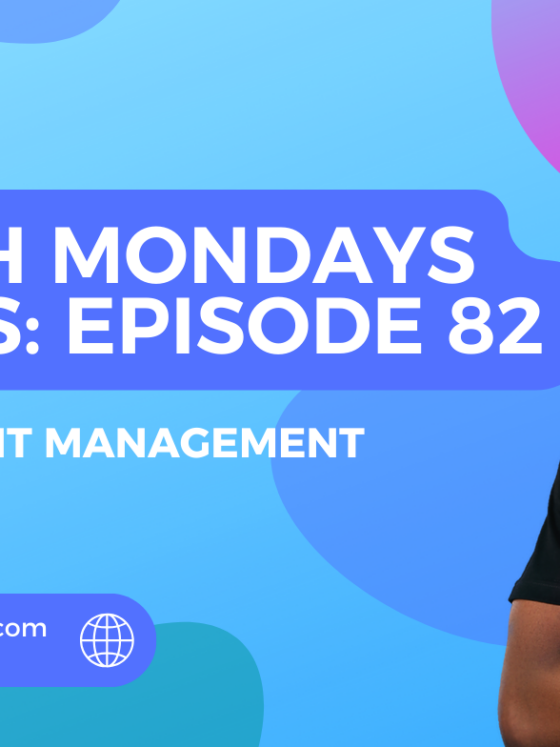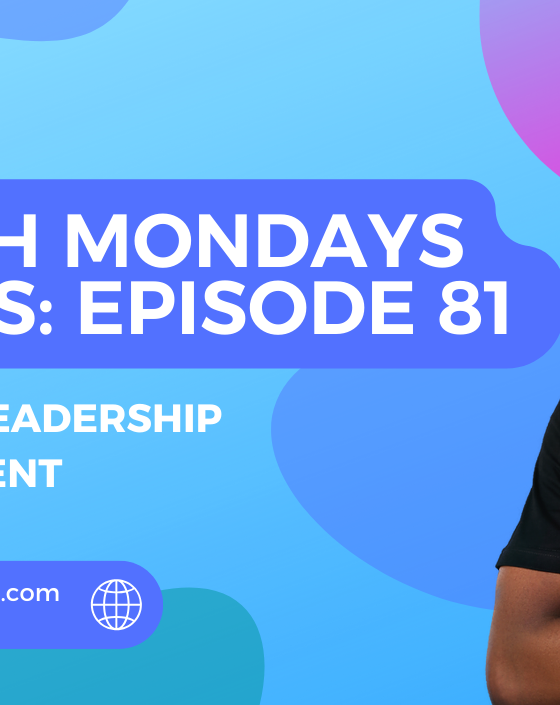Resilient Leadership as the Foundation of Long-Term Success
North Mondays Series: Episode 128

The year was 2020 and COVID-19 had everyone stuck indoors.
People had to develop creative ways to keep moving.
For some tailors, it looked like stitching face masks when clothes orders stopped coming in. Sometimes it was a restaurant turning its entire wait staff into delivery riders. Sometimes it was a schoolteacher figuring out how to run a Zoom class on patchy internet.
What separated those who survived from those who didn’t wasn’t luck or resources alone. It was the resilience of the leaders steering them.
Resilience doesn’t mean leaders never struggle. It means they face chaos, stumble, even fall but rise quickly, recalibrate, and bring their people along with them.
Why Resilient Leadership Matters in Business
Every era has its test of leadership. In 2025, the test is resilience.
The market is volatile, new competitors spring up every other day and unique problems plague the business economy. In this environment, resilient leadership is difference between outlasting turbulence and being swallowed by it.
Resilient leadership signals to your team: yes, the waters are rough, but there’s a steady hand on the wheel.
What resilience looks like in practice:
- Calm in uncertainty: Teams mirror leaders. If you panic, they panic.
- Adaptable plans: Strategies are flexible, not fragile.
- Sustained morale: Trust is maintained when communication is consistent.
- Credibility under pressure: People follow leaders who remain grounded.
- Longevity: Businesses led by resilient leaders outlast trends and shocks.
Think back to the 2008 financial crisis: many companies saw their profits nosedive. The ones that bounced back weren’t necessarily the richest. They were the ones whose leaders stayed transparent, and steady; even when delivering bad news. That stability gave their people the courage to hold on.
Ask yourself: when you lead through uncertainty, do your people walk away more anxious or more secure?
The Challenge: Navigating Crises with Resilient Leadership
Crises are the ultimate mirror for leadership. They show you who you are when comfort is stripped away.
Many leaders fail the test because:
- They panic and overcorrect.
- They go silent, leaving their teams in confusion.
- They get stuck putting out small fires while long-term goals burn.
- They push blame downward instead of taking responsibility.
Resilient leadership demands balance. It’s about naming the crisis honestly but not being consumed by it. It’s about seeing clearly, deciding quickly, and communicating often—even if what you’re saying is hard to hear.
Example: During the COVID-19 pandemic, some leaders froze or disappeared, while others stepped forward with daily updates, flexible work plans, and empathy for staff. Which group do you think their people trusted more?
The Trend: Adaptive Leadership Models Supporting Resilient Leadership
Rigid leadership is losing relevance. Today’s most effective leaders are adaptive—quick to test, quick to learn, and quick to adjust. This adaptability is resilience in motion.
Adaptive leaders:
- Experiment, learn, and iterate instead of clinging to outdated blueprints.
- Share responsibility instead of centralizing every decision.
- Welcome feedback, even from the youngest or newest voices on the team.
- Build systems designed to pivot quickly without breaking.
Take tech firms during the digital acceleration of 2020–2021. The ones that thrived weren’t necessarily the most sophisticated. They were the ones that adapted weekly; guided by data, customer needs, and team collaboration. That flexibility was their resilience.
Question: Do your systems allow you to pivot quickly, or are you locked into rigid ways of working?
Practical Ways to Build Resilient Leadership
- Develop self-awareness
- Recognize your triggers under stress.
- Reflect on past decisions made under pressure: what worked, what didn’t?
- Strengthen communication
- Share facts, even if incomplete. Silence breeds fear.
- Hold short, regular updates during times of change.
- Focus on learning
- After every crisis, Ask: What worked? What did we learn? What will we do differently next time?
- Document lessons for future reference.
- Protect your energy
- Resilience is not just mental; it’s physical. Rest, exercise, and recovery fuel leadership stamina.
- Build support systems
- Surround yourself with mentors, advisors, and peers.
- Resilient leaders don’t walk alone; they’re held up by strong networks.
Key Takeaways
- Resilience is the leader’s greatest currency in uncertain times.
- Crises reveal leadership more clearly than calm seasons ever will.
- Adaptive leadership models make resilience practical.
- Self-awareness, communication, and support systems are the scaffolding of resilience.
- Long-term success belongs to leaders who can bend without breaking.
North Mondays Action Plan
- Review a past crisis
- Write down how you handled it. Identify one thing you did well and one thing you would change.
- Create a resilience routine
- Set aside 15 minutes each week to reflect on stress triggers and your responses.
- Practice adaptive leadership
- Take one current project and test a new approach. See what you learn from the adjustment.
- Improve crisis communication
- Prepare a simple template: What happened, what we’re doing, what it means for the team. Use it in your next challenge.
- Build your support network
- Reach out to one mentor or peer this week to discuss how they’ve led through crises.
- Review your strategy
- Look for areas where your plans are too rigid. Redesign them to allow flexibility if conditions change.
Final Reflection
Resilient leadership isn’t about avoiding storms; it’s about becoming the leader who can guide others through them. The world is moving too fast for rigid models. Adaptive leadership makes resilience practical.
If you build resilience now, you will not only survive the next crisis but create the conditions necessary for long-term success.








Recent Comments